#1 Sign You Have the “Most Painful” Cancers — Eat This Not That - Eat This, Not That
Pancreatic cancer is understandably one of the most feared forms of cancer—not least because it's one of the most painful. "I would say more than 50% of patients have pain as their first symptom of pancreatic cancer," says Michael Erdek, MD, Assistant Professor of Anesthesiology and Critical Care Medicine at Johns Hopkins Medical Institutions. "If we get earlier referrals and treat it at onset, we may see some improved outcomes. We may be able to minimize side effects and improve quality of life." Here are some early signs of pancreatic cancer. Read on—and to ensure your health and the health of others, don't miss these Sure Signs You've Already Had COVID.
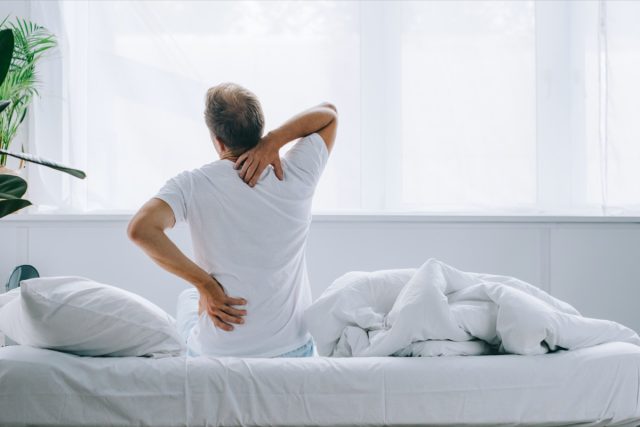
Back pain is one of the earliest symptoms of pancreatic cancer, especially if the cancer has spread to the nerves surrounding the pancreas. "The classical experience is deep and boring pain into the back, when the mass in the head of the pancreas presses on or invades the celiac plexus, a group of nerves behind the organ," says Michael Levy, MD.
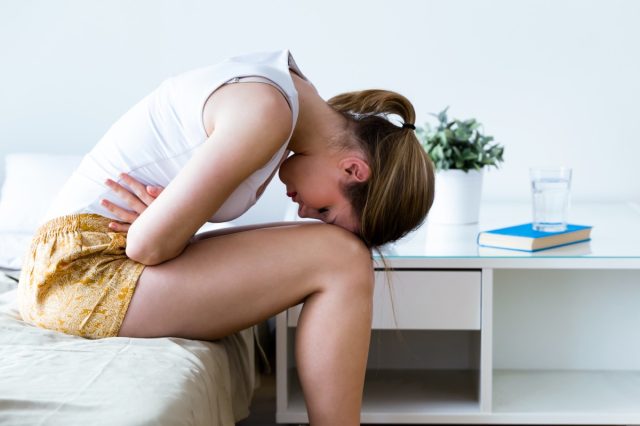
Abdominal pain is a common symptom of pancreatic cancer and should never be ignored. "The main symptom is abdominal discomfort," says Dr. Brian Wolpin, director of the Lustgarten Foundation Pancreatic Cancer Research Laboratory at Dana-Farber Cancer Institute and an associate professor of medicine at Harvard Medical School. "That sometimes radiates into the back because the pancreas is in the back of the abdomen."
RELATED: How to Get Rid of Inflammation Quick, Says Science
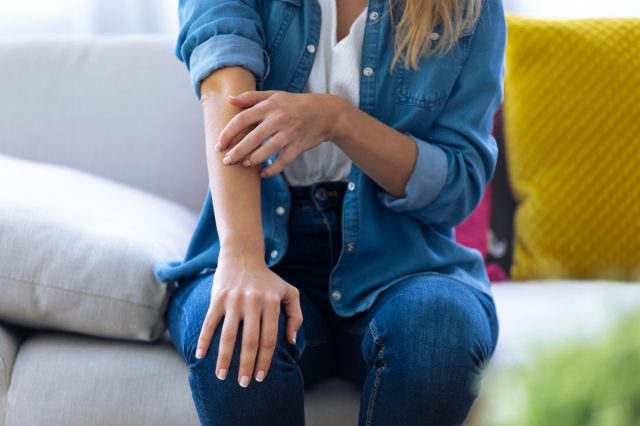
Dry, itchy skin and jaundice are early signs of pancreatic cancer, which causes the jaundice by blocking the bile duct. "This causes yellow-colored skin and whites of the eyes," says David P Ryan, MD. "Bowel movements may not be a normal brown color and instead have a grayish appearance. Jaundice is caused by a block in the flow of bile from the gallbladder, where it is stored, to the intestinal tract, where the bile assists in digestion of food. The block is caused by the cancer."
RELATED: This Common Habit Makes Your Heart Disease Risk Soar
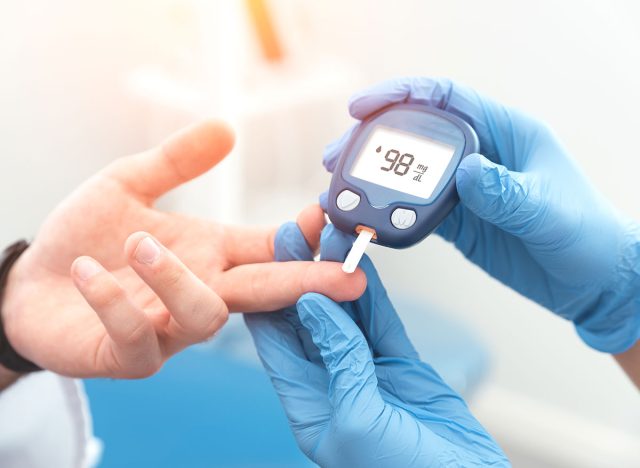
Developing diabetes after age 50 has been connected with pancreatic cancer. "The cancer seems to cause diabetes in some cases, so a new onset of diabetes, particularly later in life and with weight loss, is a sign," says Dr. Wolpin. "That being said, most people with diabetes do not get pancreatic cancer."
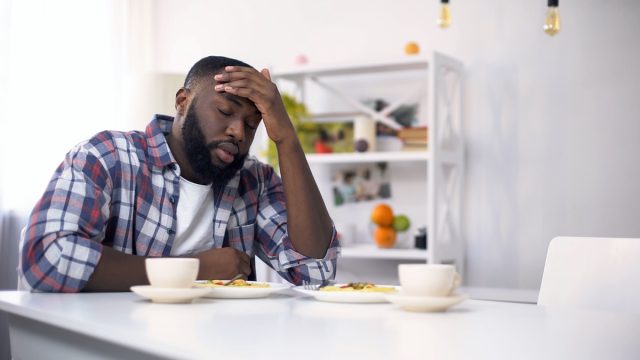
Nausea or vomiting after eating may be a sign of pancreatic cancer, due to a tumor interfering with digestion. "Digestive difficulties including indigestion, nausea, weight loss, a poor appetite, and diarrhea, can arise as a result of pressure from a pancreatic cyst or tumor on the stomach or the small intestine that causes a block in the digestive tract," according to the The Pancreas Center at Columbia University's Department of Surgery. "When a tumor grows, it can wrap around the far end of the stomach, causing a partial block. This can cause nausea, vomiting, and pain which may worsen after eating."
RELATED: Most People Get "Bad COVID" This Way

If you have any doubts or concerns about symptoms of pancreatic cancer, talk to your health care provider for expert advice and guidance. And follow the public health fundamentals and help end this pandemic, no matter where you live—get vaccinated or boosted ASAP; if you live in an area with low vaccination rates, wear an N95 face mask, don't travel, social distance, avoid large crowds, don't go indoors with people you're not sheltering with (especially in bars), practice good hand hygiene, and to protect your life and the lives of others, don't visit any of these 35 Places You're Most Likely to Catch COVID.

Comments
Post a Comment